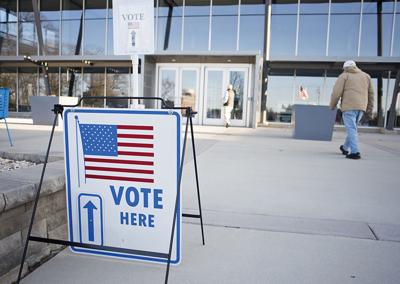EVANSVILLE — The Evansville Community School District will be left with a $2.1 million deficit if voters don’t approve an April referendum, Business Manager Tom Parsons says.
Last week, Parsons shared a forecast for the 2024-25 school year with the school board, that showed the school district will have some sort of deficit in the coming year whether or not the referendum passes. However, the situation will be far less manageable if the referendum fails.
If the referendum does not pass, Parsons suggested cuts to balance the budget, which he said meant addressing sustainability both “financially and progammatically.” He also suggested looking at “implementing program delivery efficiencies versus program elimination.”
“Engage in good faith decision making based upon data sources,” Parsons said, adding that the data sources would be actual enrollment and what ends up being projected for state and federal aid. “Ensure that resources — whether they are human, material or technology — are allocated to best support student learning.”
With or without the referendum, Parsons’ presentation factored in balancing the budget with using fund balance dollars. The fund balance would be at $4 million with the referendum and $2.1 million without the referendum, down from about $4.3 million.
He recommended considering attrition and “realignment in staff reductions rather than layoffs,” totaling about 10 full-time positions district-wide.
“About 75% of the budget is people and costs related to people so to that $2.1 million, if we were to look at a balanced budget and not use any fund balance, that number 10 would grow,” Parsons said.
Parsons told the school board that no staffing cuts would be needed if the referendum were to be approved by the voters.
State aid is partially based on enrollment, which has been declining in Evansville. In 2012, the district had just over 1,750 students and peaked at more than 1,850 in 2016.
Its enrollment has been declining by about a half of a percent annually, Parsons said. By that calculation, enrollment will be at 1,650 in 2028 and at about 1,600 in 2033, he said.
Parsons said financials are being examined to save money wherever possible. The number and specifics of bus routes are being reviewed, as are technology and software agreements. Also, the district is considering not replacing technological devices at the expiration of their warranty, Parsons said.
“Just like with a car or anything we can go beyond warranty, but there is a potential risk there,” Parsons said.
Parsons added that there is a focus on reducing curriculum and classroom budgets, activities fees and expenses are being reviewed and there may be changes to the district’s health insurance when it’s up for renewal.
Parsons predicted a 5% increase in costs, and with flat enrollment an approved referendum would keep the deficit down to $279,314 in 2004-25.
The district was in a $414,603 surplus for 2023-24.
Mill rate history
The district’s tax rate has also been plummeting. In 2014-15, the tax rate hit $13.62. Nearly 10 years later, it has almost been cut in half. The tax rate in 2023-24 is $7.69.
Other than in 2019-20 when the tax rate increased to $11.17 from $10.84, the rate has been on a steady decline since 2014. The biggest decrease was from 2015-16 to 2016-17 when the rate went from $13.20 to $11.87. After 2020-21 when the rate was at $10.73, it has been in single digits. It was $9.85 in 2021-22 and $8.39 in 2022-23.
Prioritizing finances
There were 55 items that were identified for purchase or upgrades but were grouped into categories to prioritize by the finance committee in light of the financial constraints.
The categories include safety and security; impact on learning environment; risk of not completing, can cause more issues or increase costs in the case of a break or failure; energy efficiency; doesn’t meet current standards; end of life and “would like to do.” They were then labeled “have to,” “should do” or “want to” to be prioritized, researched and quoted.
Heating, ventilation and cooling systems across the district are estimated to cost $400-500,000 per year for five years. Currently, the district budgets $55,000 annually for HVAC maintenance.
“Much of it is considered, in the industry, to have passed its useful life, which is about 15-20 years. We look at the high school being over 20 years old so we’re very much right now in a reactive state,” Parsons said.









